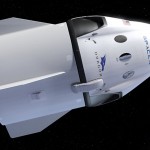What will future private jets look like?
Early aircraft models were experimental at best. Aviation pioneers did incredible things with the resources at their disposal. But when you look at some of the amazing flying machines now taking to the skies, it’s clear we’ve come a long way in the past 100 years or so. So it’s fascinating to imagine where we’ll be, in another 10, 50 or 100 years.
At PrivateFly we keep a close eye on the innovations that will impact the private aircraft of the future. While some wild headline-grabbing ideas aren’t likely to fly, here are some we think have real potential.
Future Interiors
Spacious and high-tech interiors are key attributes of the private aircraft offering today. It’s a competitive market and aircraft manufacturers are always looking for new ways to improve their cabin designs, in order to make their aircraft more attractive than their rivals.
We see minor enhancements making their way into aircraft cabins every year, but there are some major innovations that would certainly shake up the flying experience as we know it.
One specific gamechanger that caught our eye is the SkyDeck; a glass-enclosed seat installed on top of the fuselage which provides passengers with a 360-degree view of the outside world while flying.
This would totally change the cabin experience for those passengers wanting to try it! Two comfortable seats are accessed by either stairs or an lift, and once the passengers are seated, the seats can be rotated to take in the view in any direction.
A New Way With Windows
Windows are a hugely important part of an aircraft’s design, defining both the interior and exterior aesthetic. So when it comes to reinventing how an aircraft will look – both inside and out – this is a key focus of attention.
Airbus recently went so far with a new window design that it imagined an aircraft with panoramic windows around the entire aircraft, allowing for a 360 degree view while flying. The windows would also be able to control the amount of natural light let in, the humidity and the temperature of the cabin.

On at the other end of the window design spectrum, there are also innovations for windowless supersonic jets. Since windows are the weakest point in an aircraft’s structure, some designers are simply removing them altogether to allow for the aircraft to be more aerodynamic.
This doesn’t mean passengers would just stare at the wall. Instead there would be large screens, providing a live projection of the view outside, replicating the feeling of windows. Or passengers could opt for alternative images instead.

Eco Innovations
Aviation remains one of the major industries where replacing fossil fuels remains an unresolved challenge. So it’s particularly exciting to see innovations aiming to reduce an aircraft’s environmental impact.
One aircraft close to making this a reality is the Solar Impulse 2, which in 2015 attempted to circle the globe entirely on solar power. It has a wingspan bigger than a Boeing 747, but the weight of a car. And the Solar Impulse 2 is able to stay in flight for up to five days at a time, due to its solar skin with over 17,000 solar cells, supplying its four electric motors with renewable energy.

A New Supersonic Era?
Supersonic aircraft have hit the headlines a number of times lately – with several aircraft manufacturers vying to win the race to create a new generation of supersonic jets – some aiming to fly from New York to London in 3 hours or less. While the idea of a supersonic aircraft isn’t exactly new (of course Concorde operated for more than three decades until 2003), the idea of reducing travel time so dramatically is arguably even more relevant today.
NASA has recently been developing a new generation of more efficient, quieter supersonic airliners, called X-planes. While still in development, it is predicted to be about half-scale of a production aircraft and likely to be piloted. Design-and-build will take several years, with NASA hoping to start its first flight campaign around 2020.

Additionally, the Aerion Corporation, (a Nevada-based private aircraft manufacturer) have already started work on a supersonic private jet in partnership with Airbus – the Aerion AS2. The aircraft is expected to enter service early in the next decade, with the ability to carry up to 12 passengers at speeds of Mach 1.6.
Passenger Space Flights
And finally, the ultimate aircraft innovation – commercial space flight. High profile projects from Virgin Galactic and Tesla are well underway, but Boeing is also eyeing this market.

Just recently, the company Blue Origin, founded by Amazon CEO Jeff Bezos, announced that they will be launching its first space test flights in 2017 – with the hopes of having tourists on board as early as 2018.
This sounds optimistic to us – launch dates for space travel are notoriously movable feasts. See more about when we think private space flights will be available.
But whenever it happens, this innovation will not only change the way we travel by aircraft, but would open up a whole new world (quite literally) of destination possibilities.
What aircraft innovations are you looking forward to seeing in the future? Share your thoughts with us and follow our latest news on Facebook or Twitter.
Related content



